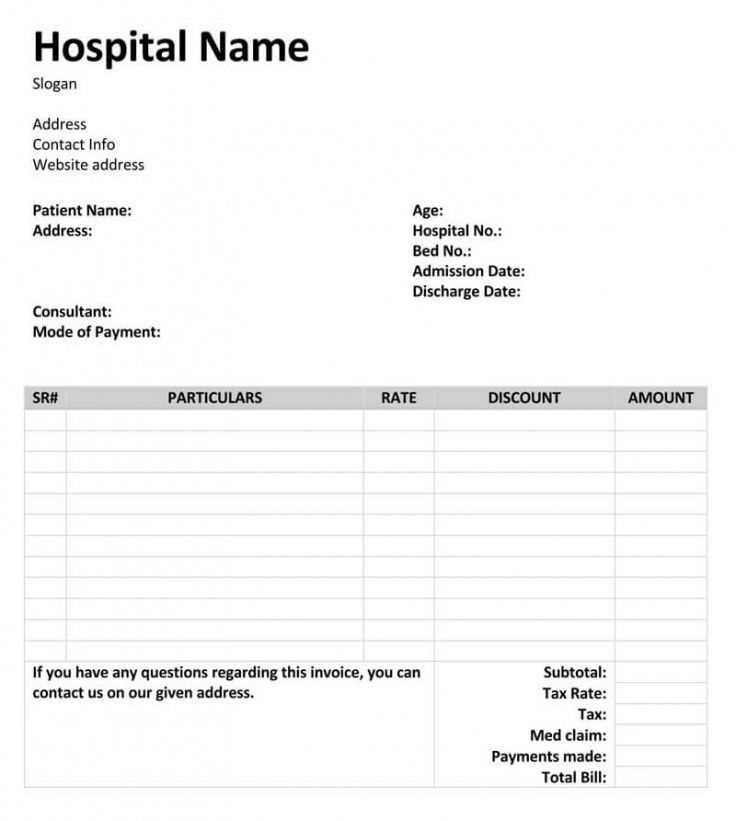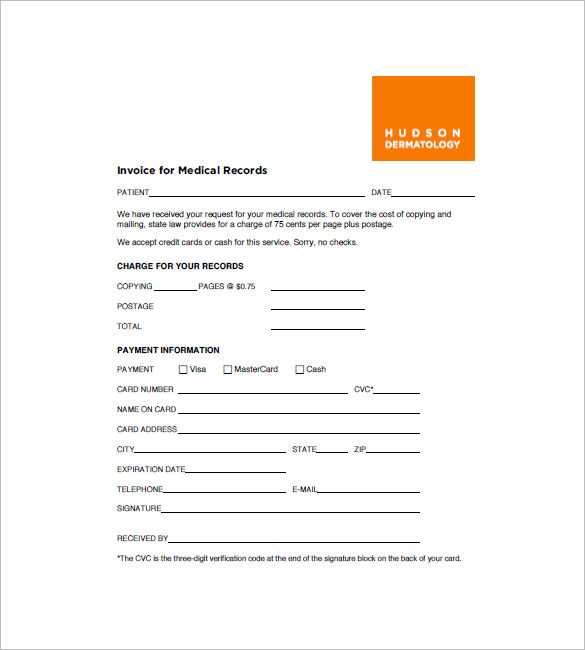
To create a medical insurance receipt, include the patient’s personal details, service provider’s information, and the date of service. Ensure that the receipt reflects the nature of the service provided, along with the amount billed and any payments made. A well-structured receipt should also mention the policy number for verification purposes.
Start with accurate contact details: The header should feature the provider’s name, address, phone number, and email address. The patient’s full name, policy number, and insurance provider’s name should follow, along with the date of service.
Clearly outline the services rendered: List all procedures or consultations, with corresponding charges for each. Include codes for services where applicable, ensuring clarity for both the patient and insurance company.
Payment breakdown: Indicate the total billed amount, amount paid by insurance, and any out-of-pocket expenses. Transparency in this section helps prevent misunderstandings regarding financial responsibility.
Medical Insurance Receipt Template
To create a medical insurance receipt template, include the following key elements for clarity and accuracy. First, provide the patient’s full name, along with their insurance policy number and contact details. Ensure that the service provider’s name, address, and phone number are also visible.
Next, list the medical services rendered, detailing each procedure or consultation with corresponding dates, descriptions, and costs. It’s crucial to itemize any medical supplies or prescriptions given during the visit. Also, include the total amount charged, clearly separating insured and out-of-pocket costs.
Key Sections to Include
In addition to the patient and provider information, include a section that shows the payment status, whether the full amount has been paid or if a balance remains. Include payment method details, such as whether the charge was covered by insurance or paid directly by the patient.
Formatting Tips
Ensure the receipt is easy to read, using a professional font and clear separation between each section. Make sure the template is customizable to accommodate different medical services and insurance types. This allows both patients and providers to accurately track payments and claims.
Creating a Basic Structure for Insurance Receipts

Begin by including the name of the insurance provider and the insured individual at the top of the document. Ensure the provider’s full name, contact information, and policy number are clearly visible. Right below that, list the patient’s details, including their full name, address, and policy number, ensuring consistency in format for easy reference.
Key Information to Include

Include a clear description of the service provided. Use simple terms to explain the procedure or treatment, and make sure it matches the medical records for verification. Specify the date of service and the provider’s signature to validate the receipt. This adds legitimacy and helps in case of future claims.
Final Steps

Conclude the receipt with the total amount billed, noting any applicable deductions or co-pays. If applicable, mention the amount covered by the insurance and the remaining balance due. Make sure the document is easy to read, with a professional layout and logical flow of information.
Including Necessary Information for Accurate Claims
Ensure that all relevant patient details are provided. This includes full names, date of birth, and insurance policy numbers. Double-check the accuracy of the information before submitting to avoid delays or rejections.
Clearly specify the services rendered, including dates of service, diagnostic codes, and treatment descriptions. Detail the costs associated with each service, along with any applicable fees or co-payments. Accurate billing codes are crucial for a smooth claim process.
Attach Supporting Documentation
Include any necessary supporting documents, such as test results, medical records, and referral letters. These materials help to verify the treatment provided and justify the charges. Without this documentation, claims may be flagged for review or denied.
Confirm Insurance Details
Always verify the patient’s coverage before submitting a claim. Ensure that the services provided are covered under the patient’s plan and confirm the network status of the healthcare provider. This helps prevent confusion and accelerates claim processing.
Formatting Tips for Professional Presentation
Align text to the left for clarity and consistency. Use a standard, readable font like Arial or Times New Roman, with a size between 10-12 pt. This ensures the document is legible and professional. Avoid overly decorative fonts as they can reduce readability.
Margins and Spacing
Set uniform margins (1 inch on all sides) to create a balanced look. Add adequate line spacing (1.5 or double) to prevent a cluttered appearance and improve readability.
Clear Section Divisions
Organize the receipt into clearly defined sections. Use bold headers for each part (e.g., patient information, billing details, payment method). This helps the reader quickly navigate through the document.
- Bold for section titles
- Use underlines sparingly for emphasis
- Include bullet points for lists or important details
Ensure that any amounts or important figures are prominently displayed with a larger font size or in bold. This draws attention to key information, such as totals or payment status.
Incorporate a clean layout with enough white space around text and figures. This reduces visual strain and enhances the overall appearance of the document.


